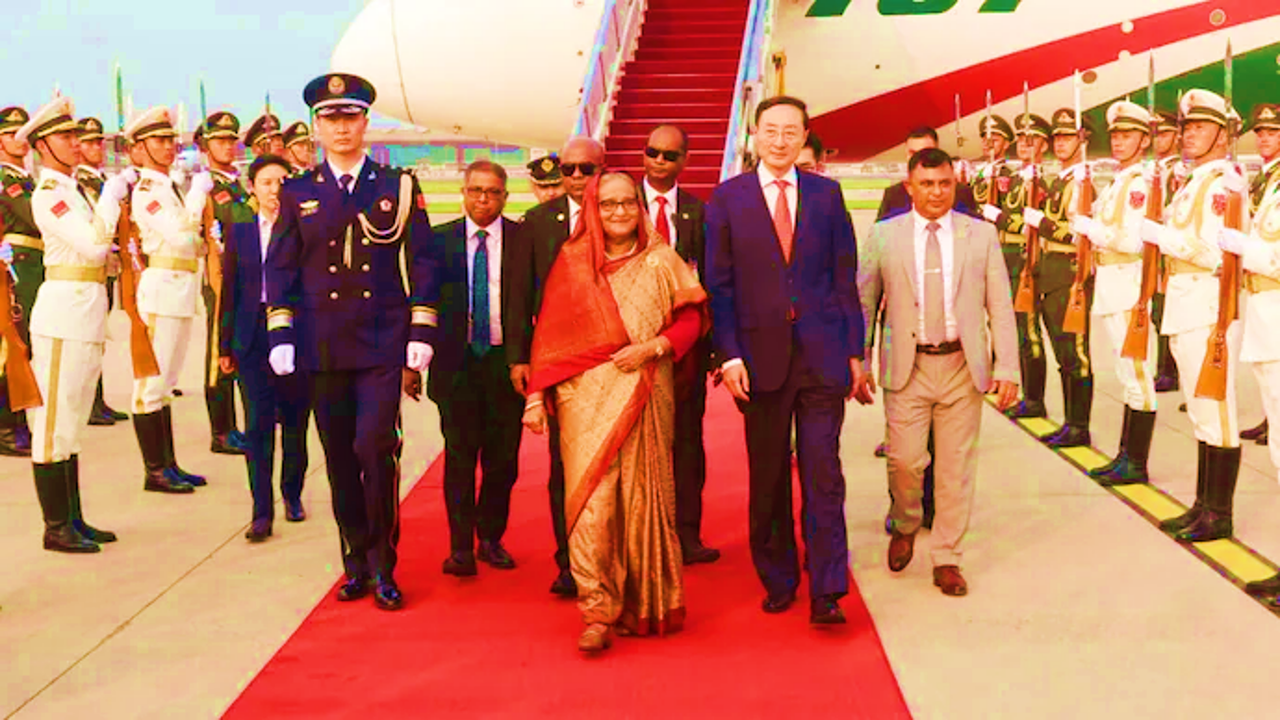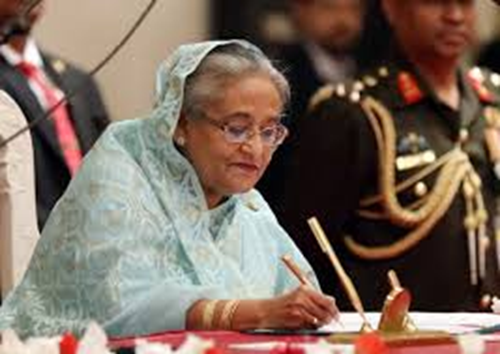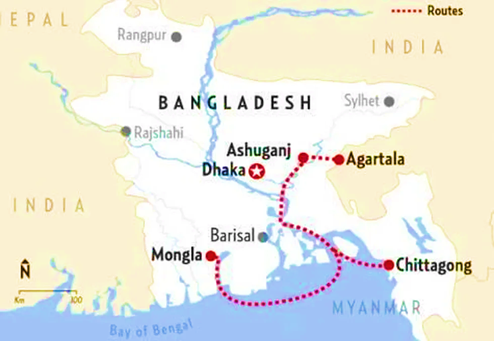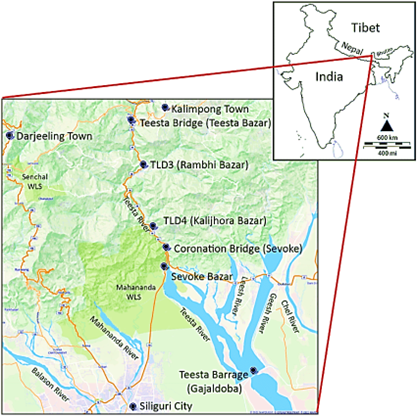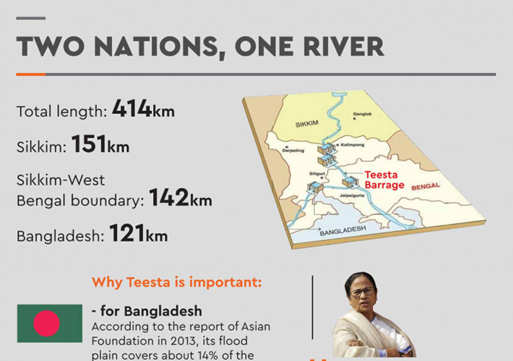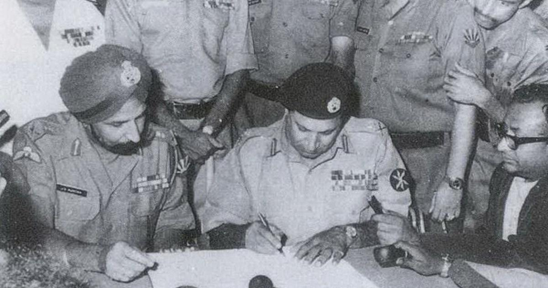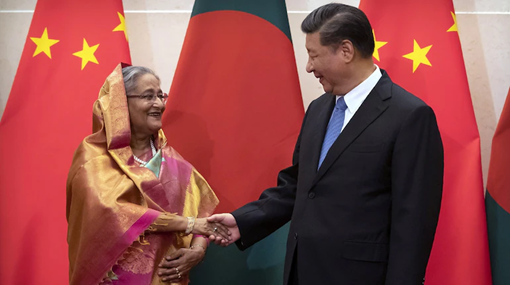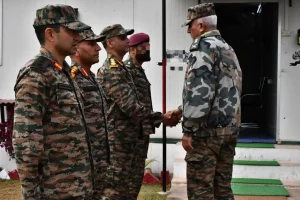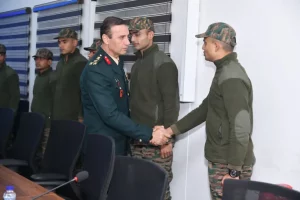Bangladesh Prime Minister Sheikh Hasina arrived here on Tuesday on a four-day visit for talks with China’s top leadership, including President Xi Jinping and Premier Li Qiang to further cement the bilateral strategic ties.
PM Sheikh Hasina’s China Visit
Why In News
- Bangladesh Prime Minister Sheikh Hasina arrived here on Tuesday on a four-day visit for talks with China’s top leadership, including President Xi Jinping and Premier Li Qiang to further cement the bilateral strategic ties.
- This visit of the Bangladesh premier to China is taking place within 15 days after her last visit to India from June 21 to 22.
What’s On The Agenda
- At least 20 memorandums of understanding are expected to be signed, covering areas such as economic and banking, trade and investment, digital economy, infrastructure development, disaster management, construction of the sixth and ninth Bangladesh-China friendship bridges, agricultural exports, and enhancing people-to-people connectivity.
- Chinese Foreign Ministry spokesperson Mao Ning announced that China is ready to work with Bangladesh to uphold the spirit of the Five Principles of Peaceful Coexistence, deepen political mutual trust, align development strategies, advance high-quality Belt and Road cooperation, and elevate bilateral relations.
- Currently, there are no loan agreements to be signed, although the topic may arise during discussions. Bangladesh is aware of the risks associated with Chinese loans.
- Speculations had suggested that Bangladesh might seek substantial loans to bolster its dwindling foreign reserves, with discussions centred on a $5 billion loan in Yuan for trade facilitation, but terms and conditions have yet to be agreed upon.
India’s Concern
- As for India’s concerns, the first one is around the issue of FTA or free trade agreement. India will be interested to know the contours of the likely FTA as a country that gives Bangladeshi products free access to India while paying duties for market access there. So, It will indeed be a concern if Chinese goods get concessions in Bangladesh.
- Secondly, the strategically important Mongla Port, where all the development was taking place under an Indian line of credit. Now the Chinese are interested in activities like constructing jetties and a container yard, this is sure to cause discomfiture to India.
- Thirdly, if the Teesta water sharing issue surfaces during the visit, it could complicate matters for India. While Bangladesh has been waiting for a water-sharing deal with India for more than a decade, China reached out to Hasina with a proposal.
Teesta River Dispute
- Teesta water is a sensitive issue in Bangladesh, both politically and environmentally. It is an equally sensitive topic in India, especially in West Bengal. The Teesta water-sharing has been a contentious issue between India and Bangladesh.
- And now a Teesta reservoir project in which China is seeking to participate has got experts in India worried.
- West Bengal Chief Minister Mamata Banerjee protested at being left out of the talks that Prime Minister Narendra Modi had with Hasina on the conservation and management of the River Teesta and renewal of the 1996 Ganga Water Treaty. She was in touch with INDIA bloc allies to take up the issue strongly with the Centre, said sources.
- Teesta River originates in the Himalayas and flows through the Indian states of Sikkim and West Bengal before entering Bangladesh and eventually emptying into the Bay of Bengal.
- For Bangladesh: According to the report of the Asian Foundation in 2013, its floodplain covers about 14% of the total cropped area of Bangladesh and provides direct livelihood opportunities to approximately 73% of its population.
- For West Bengal | Teesta is the lifeline of North Bengal and almost half a dozen districts of West Bengal are dependent on the waters of Teesta.
- Even on Tuesday (July 9), Mamata said that sharing of Teesta water with Bangladesh would lead to scarcity of drinking water in Bengal.
- Delay In Teesta Treaty And Hasina’s Domestic Woes | Professor Nazrul explains why the delay in the inking of the Teesta agreement planned for 2011 has put Sheikh Hasina in a difficult situation in Bangladesh.
- “Bangladesh said it wouldn’t allow any transit project of India without the Teesta agreement. Bangladesh has given India access to its port and other infrastructure. However, Bangladesh has, with sincere hopes, also opened a rail corridor. People are asking if they’ll get a corridor to Nepal and Bhutan through India,” he says.
Timeline of the Negotiation Events
- 1951: The then-East Pakistan (now Bangladesh) and India signed the ‘India-East Pakistan Agreement on the Sharing of the Ganges Waters,’ which included the Teesta River. The agreement provided for the equitable sharing of the river’s waters.
- The negotiations on how to share the water have been going on since 1972.
- 1972: The Joint River Commission (JRC) was established by India and Bangladesh in the Indo-Bangla Treaty of Friendship.
- 1983: Agreement on ad hoc sharing of Teesta water. According to the agreement, ad hoc sharing is valid until 1985 end.
- 1984: According to 1984 JRC, Bangladesh’s share increased based on the hydrological data.
- 1998: Bangladesh started the “Teesta Barrage” irrigation project (3 cropping seasons per year).
- 2011: An interim deal that was supposed to last for 15 years – gave India 42.5% and Bangladesh 37.5% of Teesta water.
- Note: However, West Bengal and Sikkim opposed an interim deal, since then the deal was shelved and remains unsigned due to the objections of West Bengal.
Bangladesh’s Stand on the Teesta River Dispute
- TheIndia already enjoys a share of 55% of the river water.
- Bangladesh claims 50% of the water between December and May every year because that’s when the water flow to the country drops drastically.
- Over 1 lakh hectares of land in Rangpur – its rice bowl cannot be cultivated for winter crops due to excessive withdrawal of water by India.
- Bangladesh demands a fair share of river waters during the dry season.
India Is Watching
- Both China and Bangladesh are aware that India is closely monitoring Prime Minister Hasina’s visit to China.
- Chinese government mouthpiece The Global Times noted that Indian media are highlighting the visit, which follows closely after Hasina attended Prime Minister Narendra Modi’s swearing-in ceremony on July 4. The Indian media have emphasised potential Chinese investments in Bangladesh under the Belt and Road Initiative, noting that Bangladesh is the second-largest recipient of Chinese investment after Pakistan.
